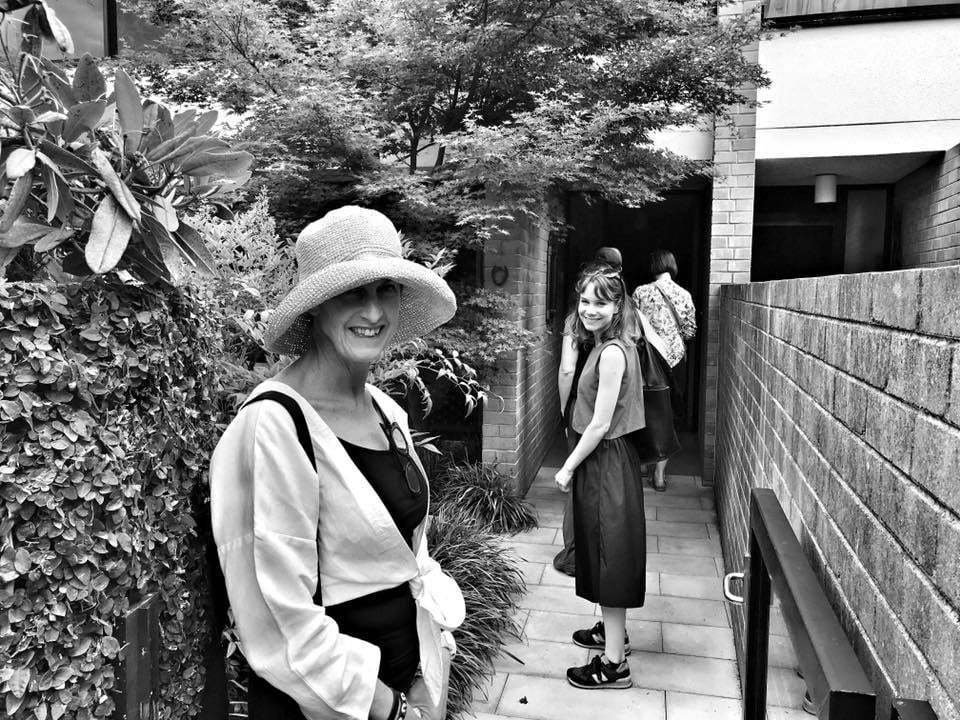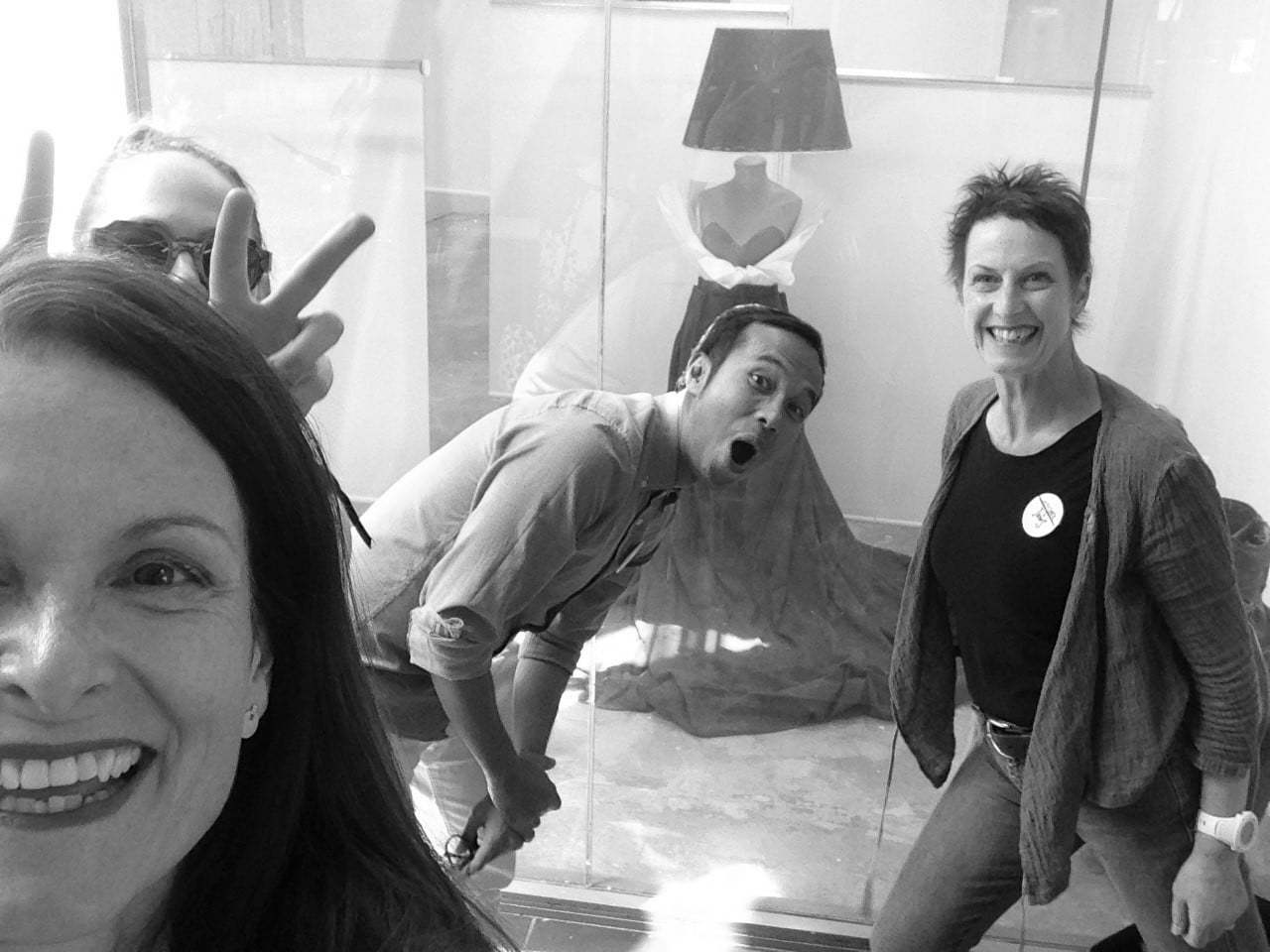Taking detours into other creative fields can help balance work and domestic life, but it also adds breadth and richness to an architect’s core set of skills, argues fashion designer–turned–architect Bronwen Jones.

As a young woman from Tasmania who loved sewing and beautiful fabrics, I started out as a fashion designer in Melbourne in the early 1980s. Graduating from RMIT, I worked in Flinders Lane, the heart of the garment trade, designing sample collections for each season. Fast paced, sexist and exploitative, it was a heady and exhilarating experience where I mastered the questionable art of reinterpreting European samples for the Australian market. A long-held ambition to work for Prue Acton, icon of the Melbourne fashion design scene, was never realised because I met my future husband who lived in Canberra.
I arrived in Canberra in the mid-1980s to a fashion industry in its infancy and with few prospects. However, with a cracking hairdo and a fair bit of youthful self-confidence, I leveraged creative skills into other sectors. With gigs as an interiors stylist and on the selling floor, I honed skills in making spaces and listening to people’s needs and aspirations – invaluable experiences which I still draw on. Weekends were spent building a house from scratch; it was hard graft and a foreshadowing of future directions.
It was also at this time that I hit the blunt reality of being unable to reconcile motherhood and meaningful work. Fuelled by a sense of injustice about the slow pace of change for working women, I turned to the profession of architecture for salvation. With a conviction that the profession had agency to effect change, I felt this was the place to pour a well-spring of creativity into making the world a better place.
And so I went back to university and discovered that if you can design a frock, then designing a building was not such a big leap! With young children in tow, I became a registered architect in the early 2000s. At a time where there were few options available, I gravitated to practices who valued my skills and diversity of experience, as much as those willing to accommodate the needs of a working mother. Juggling full-time work, growing as a professional, and being a useful parent define this period, but eventually the children grew up and sufficient space in life opened up to look beyond the demands of this frame of reference.
Stints as a sessional teacher in the Faculty of Arts and Design have been a constant companion of professional life – the university being a place to connect with the next generation of practitioners, as much as an opportunity to explore and refine long-held theoretical positions. It was here that I began to use the learnings from fashion to inform the built environment, in particular interior architecture.

Perhaps it is no surprise then that once I had transgressed the boundaries between fashion and architecture, I turned my interest to city making. Blurring the boundaries between disciplines has been a logical progression – all deal with the human body and movement, and all require firmness, commodity and delight. It is really a matter of scale and context.
Arriving at this position was a seminal moment of realisation. Working with values, ideas and skills accumulated over time. I have spent the last few years oscillating between private practice and the public sector, tackling some of the critical issues of our time – notably sustainable and liveable cities. The opportunity to influence the built environment and how well we live together is ever present.
As a senior practitioner I have mentored many talented younger women in architecture as they navigate the complexities of equitable career progression. More recently, I have been talking with these women about the possibilities of expanding the boundaries of creative practice and looking beyond architecture’s traditional focus on the look and making of buildings. The intention isn’t about leaving architecture; rather, it is about taking opportunities to detour into new fields, adding breadth and richness to a core set of skills and expertise. Detouring is also a strategy for working around a profession that is still finding its way supporting young professionals, especially through the child-rearing years.
A view of the world, shaped by life experiences gained by being a woman and/or by different life trajectories, enriches the profession’s ability to better see, hear and understand the needs of clients, communities and the physical setting for living well together. Research supports this proposition – not only does diversity of experience, gender and age enable better financial performance, but embracing diversity of thought also propels creativity and innovation.
Whilst the ongoing relevance of the architectural profession is partly wrapped up in fostering an openness to those who have taken different forks in the road, experience also tells me that embracing expanded fields of practice is a magnificent way to sustain a creative and fulfilling professional life. To this end, it is not unexpected that the modest ambitions of a girl from Tassie have blossomed in this environment.

Bronwen Jones is an experienced design professional practising at the intersection of urbanism and architecture, with a passion for making great places where a good life can flourish. Drawing on her design expertise and leadership skills, Bronwen is currently working in strategic planning for the ACT Government, managing the formulation of policy to lift design quality of key parts of Canberra experiencing growth and renewal. Acting on her convictions, Bronwen sold her car in 2011 and, more recently, sold the suburban dream for a compact flat in the centre of the city. Small living, less possessions and walking or catching public transport continue to inform many aspects of her thinking about how we respond to the critical environmental and social issues of the time. Bronwen is a co-curator (architecture) for DESIGN Canberra, an annual festival fostering human, creative and global connections and promoting Canberra as a city of design.
An early version of this article was first published by the ACT Gender Equity Taskforce in their getDEEP (Diverse Equitable Employment and Practice) booklet. getDEEP is intended as an introduction to some of the resources, research and expertise available on issues of equitable practice, including Parlour and the Parlour Guides to Equitable Practice. The booklet is available for download here. A version of the interview has been republished here with permission.
The sixth Parlour Guide to Equitable Practice covers Career progression, offering suggestions for supporting women’s professional development. This includes supporting women with ‘traditional’ architectural careers in private practice, and those with more complex ‘flexible’ careers.




















